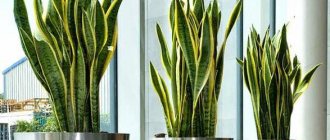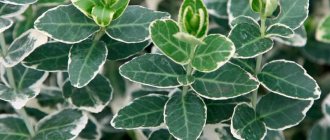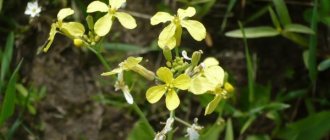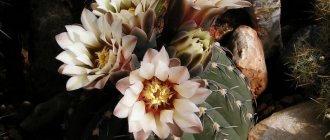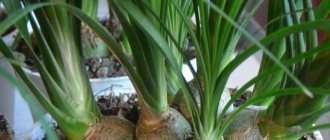Violet is loved by flower growers because it has an attractive appearance and a rich range of colors (the color depends on the variety). It does not require large investments in maintenance and is quite compact. At the same time, not everyone knows about where the birthplace of violet is, an indoor plant known throughout the world. It is used to decorate corridors, living rooms, bedrooms, and reception areas. Florists call violets as Saintpaulia (Saintpaulia), popularly it has the name Pansy (although this is only one subspecies of this plant).
Homemade violet - description and photo
The houseplant is a hybrid. Has many varieties and types. Today there are more than 30,000 varieties of flowers. This or that variety is recognized by its characteristic features - the size of flowers, leaves, color, the presence of fringe on the surface of the plant, borders, patterns - on the petals, etc. They bloom almost all year round under favorable conditions, including proper care.
To avoid problems with Saintpaulia, the soil of the flowerpot is constantly fed. Approximately 1-2 times per month. In winter, organic substances are added to the soil, and minerals in spring and autumn. Saintpaulia “does not like” direct sunlight, high temperatures, and drafts. When placing a flowerpot on a windowsill, make sure that there is no blowing from the cracks of the windows and that there is no heat coming from the radiators (during the heating season).
Professional gardeners - about the nuances of care
Planting and care have their own specifics. The plant does not like cold and reacts to it very quickly. Humidity and light are a completely different matter. But here it is important not to overdo it. For a plant such as violet, almost all species need shade if it is a hot and sunny day outside. The duration of daylight hours should be 13-14 hours.
Violet is an amazing, delicate “beauty” among other flowers. Gardeners love marsh violet, butterfly violet and some other varieties for their prolific flowering (sometimes up to 9 months). So that you can observe beautiful flowering for as long as possible, planting and care should also include sufficient lighting. To do this, creeping violet and night violet are placed on window sills that face west, east or north. Windows on the south side are also suitable, but it is advisable to place the pots on a table or shelf at the back of the room or to the side of the window.
As for temperature, the range from +18 to +24 is considered optimal. In violets, growth and reproduction deteriorate when there are changes in cold and heat in the apartment.
Pansies are rarely found in apartments and private houses (violet does not grow well in greenhouse conditions), as well as marsh violet. Preference is given to hanging varieties. They are distinguished by rather voluminous rosettes, stems falling down.
Violet as a houseplant
When choosing a color scheme, preference is given to white colors and light shades - for decorating children's rooms and bedrooms, bright ones - for corridors and living rooms, dark ones - to complement a certain interior style (minimalism, modern classics, loft).
Saintpaulia as a houseplant has the following advantages - a wide selection of varieties from small species with a rosette diameter of 2-3 cm, to large individuals of various tones (not only the classic purple and blue). It is bred at home by simple flowerpot lovers. An indoor flower loves light, but if there is not enough of it in an apartment or house, this is not a problem; it grows well under artificial lighting lamps.
Important! Watering is carried out in various ways, including wick. This makes it possible to leave the flowerpot for 10-15 days without additional soil moisture.
Main mistakes when choosing
Next, we will tell you about the most common mistakes when choosing a container for violets.
- Pot too big. In this case, Saintpaulia most likely will not bloom and the soil may become acidic, because the roots will not occupy the entire volume.
- The pot is too small. In such pots, violets stop blooming and growing. New leaves, if they appear, look sick and have signs of deformation.
- No drainage holes. If they are not there, moisture begins to accumulate at the bottom of the pot and the roots quickly rot. Also in this case there is no air circulation. Usually in such cases, violets die quickly, because do not tolerate high soil moisture.
- Lack of drainage layer in the pot. In this case, water stagnation may also occur and the roots of the plant will begin to rot. Therefore, do not forget to use drainage when transplanting.
Using good soil when replanting is a very important condition for the proper development of the plant.
Common varieties
Every year its subspecies, types and hybrids become more and more numerous. Each collector has the opportunity to choose a Saintpaulia according to his individual taste preferences. There are popular varieties that are loved by everyone - ordinary flower growers, gourmet breeders. These include “Currant Dessert”, “Bride’s Bouquet”, “Jan Minuet”, “Aquamarine”. Each of them has its own flavor.
“Currant dessert” has star-shaped flowers of a rich bright purple color with a dark blue tint. The socket is large. The leaves are dark green with fringe. Beautiful, attracts attention, fits into almost any interior. This is not only a home variety, it is often used to decorate festive events.
“Bride's bouquet” is a lush, elegant variety. The white flowers are large in size and have a fleecy surface. The edges of the petals are wavy. The leaves are dark green. This variety is also used to decorate banquet halls. The finished compositions have an expensive, noble appearance.
"Yang Minuet" is a white or pale pink Saintpaulia with a bright purple border on the petals. The flowers are large, sometimes reaching 10-12 cm in diameter. The leaves are emerald green, fleecy with a wavy edge. It blooms profusely and, with proper care, does not lose its brightness. In a hot microclimate and insufficient lighting, it stretches upward and becomes covered with brown spots.
"Aquamarine" is a popular blue variety. The flowers are approximately 5-6 cm in diameter. They have a strong root system. The socket is also large and powerful. This violet produces abundant flowering. Does not like heavy watering. Flowers can be of different colors in one flowerpot - from sky blue to indigo. It does not tolerate cold weather, so it is not recommended to keep it on the balcony.
Homeland of indoor violet. Origin of the flower
For the first time, Saintpaulia (Gesneriaceae family) was discovered on the territory of the Uzambara Mountains. Therefore, East Africa is considered its homeland. Governor Saint-Paul found and was impressed by the beautiful appearance of the unknown plant. He was walking at the foot of the mountains and accidentally came across a place where violets bloomed profusely. Hence the name “Saintpaulia” (in honor of the governor) and “Uzambarskaya” (from the location).
Saint-Paul was well versed in flowers, as his father was a famous plant breeder. The governor drew the pope's attention to an unknown plant. My father also liked it, and he decided to show Saintpaulia to the whole world. He brought it to the annual international flower exhibition in 1983 in Belgium. Saintpaulia caused a sensation among collectors. After the exhibition, the seeds spread throughout the globe. Breeders began to experiment and create new varieties and hybrids, using the eastern type as a basis.
Reproduction methods
Cuttings
To propagate Saintpaulia, leaf cuttings are used. To begin, cut the leaf along with the petiole, leaving a length of 40 to 50 mm. Use a sharp and well-disinfected tool. The cut area should be dusted with charcoal powder.
Fill a glass with water and dissolve 1 tablet of activated carbon in it. Place the cuttings in it for rooting. As a rule, roots should appear after 18–21 days. When this happens, the leaves are planted in small containers and covered with plastic wrap on top. The shelter is removed after 7–15 days.
Growing from seeds
To begin with, select a suitable Saintpaulia bush that is completely free of disease symptoms. Then, using a brush with soft bristles, you need to artificially pollinate the flower. To do this, take pollen from the flowers of one plant and transfer it to the pistils of another plant.
The ripening of the seed pods will end after approximately four months. The removed seeds should be sown in a small bowl filled with moistened soil mixture. The seeds must be combined with sand, then they are distributed evenly over the surface of the substrate, and there is no need to sprinkle them on top. The crops are covered with film or glass from above and transferred to a place where it is always warm. Young plants need to be picked after their rosettes are well developed.
Stepsoning
Remove the growth point from the bush and then stepsons will form. It will take some time for the daughter shoots to grow and develop. Once they reach 40 to 50 mm in diameter, they should be trimmed and planted in a separate pot.
Where does it grow? A country where you can find it in natural conditions
The Uzambara type of Saintpaulia is considered native and classic. It is a pale blue violet with a medium-sized rosette and light green leaves. Initially, the blossoming buds had no smell. Nowadays, types have been bred whose flowers have a characteristic pleasant aroma.
Since its homeland is in warm regions, the plant loves the sun (not heat) and dies at low temperatures. It is optimal when Saintpaulia has a little shadow, as, for example, a mountain provides it. Saintpaulia grows under natural conditions in southern Africa, Brazil, and Australia. And it is bred in almost all civilized countries of the world, despite its origin.
Attention! Room temperature conditions are optimal and favorable for growing violets in flowerpots, which is why flower growers are so attracted to flowers.
On the street, Saintpaulia is bred in areas with a tropical climate. In the CIS countries, flowerpots decorate the garden area in the summer. As soon as the air temperature drops below 17-18 C, they are removed into the house.
Wikipedia – interesting facts
In the free access encyclopedia you can study all the detailed information about Saintpaulias - classification, history of origin and breeding of varieties, how to grow and care for them, where they are used, etc. There are many interesting facts about pansies, some of them are:
- The inhabitants of ancient Greece used Saintpaulia in divine rites (the flower symbolized both joy and sadness).
- Also among the Greeks, when children turned 3 years old, this event was celebrated magnificently; wreaths with Saintpaulias were put on the children (this symbolized the transition from infancy to the next stage of development).
- Louis XVI (King of France) and Turgenev (Russian writer) had a special relationship with violets. At one time, the poet, while undergoing treatment in Wiesbaden together with Balashova, got up every morning for a walk and collected a bouquet for his beloved.
- Residents of Germany have a separate holiday for Saintpaulia. It is celebrated at the beginning of spring (first Sunday).
- The aroma of Parma violet is the basic basis for the creation of the famous perfume “Vera Viollet”. They were first released in 1870. Their production continues to this day.
- With the help of violets, some minerals are found. In Europe, large deposits of zinc were discovered where large pansy flowers grew abundantly.
Important! The plant is used not only for aesthetic purposes.
Flowers are used in cooking and medicine. Petals of certain varieties are dried and then used as a seasoning. Flowers are also used to produce medicines. With their help, it is possible to successfully treat diseases of the gastrointestinal tract, cardiovascular system, upper respiratory tract, etc.
The world around us and legends
Due to their unusual beauty, people have long considered violets to be a divine message. There are many legends and mythical stories about them. Flowers were used in spiritual rituals, believing that they were endowed with unearthly power.
The legend of Adam tells about Viola (as one of the garden varieties is usually called). She was considered the tears of the first man on earth. Adam was expelled from paradise to the island of Ceylon. It was there that he lived and constantly prayed to God for forgiveness. When grace was sent to him, his tears flowed in a stream. In this place, beautiful flowers of extraordinary beauty grew, later called forest violets.
The legend of Zeus also brings to mind Viola. The daughter of Atlas fell out of favor with the Sun God. He decided to punish the girl by scorching her with burning rays. While running away, she decided to ask Zeus for protection so that he could find a secluded place for her. He turned her into Viola and hid her in his heavenly forests. She had the opportunity to appear, blossoming every year, delighting the inhabitants of Olympus. The daughter of Zeus loved to walk here. One day she was kidnapped by Pluto, and in her place was left a beautiful bouquet of forest flowers.
The Greeks used Viola as a symbol of chastity. It was used to decorate places where special events were held. Also, the inhabitants of Greece often used Saintpaulia for incense. In Rome, Viola was popular as an ingredient for making wine. Throughout Europe, Saintpaulia was used to declare love. Sending a violet to a girl without words was considered a revelation.
Viola was also loved by the warriors of the Zaporozhye Sich. The Cossacks dried its roots and made amulets from them. It was believed that they protected warriors from arrows, swords, wounds and gave vital energy. The Cossacks used Viola as a medicinal remedy, preparing decoctions and infusions from it.
China distinguished itself in its own way. Designers from the Middle Kingdom created a collection of dresses that smelled like pansies. Moreover, the smell does not disappear even after several washes with detergent. The dresses are created in a free style, personifying airiness, youth, and radiance.
Interesting! Saintpaulia seeds were used for space experiments by American scientists. The goal of the study was to determine how plant genetics change after exposure to conditions of weightlessness and cosmic radiation. The result is that a new species has emerged.
Conditions for growing violets are close to natural
To grow flowers at home and on your own, you don’t have to put in much effort. The main thing is to carefully monitor the condition of the plant, feed it on time, prune it, water it, and protect it from the sun. Favorable growing conditions:
- Alternating wick and top irrigation (thus simulating recharge of the soil from groundwater or rain).
- For feeding, fertilizers are selected in liquid or granular form (for young individuals - nitrogen, for flowering - potassium-phosphate).
- Room mode - favorable indoor air temperature 18-22C, humidity - 65-80% (a very important condition), natural lighting, not too bright (in nature they are protected by shade from bushes and trees).
- Loosening the soil several times a month (providing the roots with access to oxygen).
- Land for planting is used from forests or bought in specialized stores (it contains humus and sand).
- Pots or containers are changed as the flower grows (damaged or infected parts are removed).
Important! Saintpaulia is sensitive to various pests - bacteria, fungi, etc. Most often it is infected with a nematode.
The bacterium attacks the root system. This pest reproduces well in forest soil. Therefore, when planting a plant, it is better to use ready-made soil from the store, which has undergone purification treatment, but remains rich in minerals. Another dangerous pest is thrips. These are small insects that breed on violet leaves. You can protect flowers from death by promptly removing damaged elements. Therefore, you need to ensure that the leaves and petals do not change their color to yellow, brown or black, do not become covered with spots, etc.
Pots for wick watering
Wick watering and a properly selected pot will provide comfortable conditions for violets.
If you have already chosen a pot and soil for your violet, you need to understand the issues of care and decide on the method of watering. If you simply water from above or pour water into a tray, the roots may either dry out or become stagnant. Therefore, many gardeners believe that wick watering of violets is ideal for creating comfortable conditions for the flower.
This principle is based on the use of a “wick” - a small cord or tourniquet, the role of which can even be played by a piece of fabric. The essence of the method is that water rises up the wick and the plant itself consumes as much moisture as it needs at a given period of time.
Features of wick watering of plants:
- If the wick is not installed correctly, the soil may become too wet, causing the roots to rot.
- The growth and lack of flowering of violets does not depend on the method of watering, but rather on the wrong choice of pot.
- In winter, it is better to move the pots to a warmer place so that the water for irrigation does not cool down.
It is easy to switch to this method of watering, even if you have been growing violets for a long time. Let's take a closer look at how to make a wick irrigation system yourself.
- First of all, you need to choose the right soil for violets. It should be light, very loose, in order to absorb moisture well and allow air to pass through.
- You must choose a pot with holes in the bottom. A cord is inserted through these holes and rolled into a ring inside the pot.
- Next, the plant needs to be planted and covered with substrate. The important thing is that a drainage layer is not required.
- All containers with violets are placed on a large tray to be evenly soaked with water, and then each pot has its own tray, where water is added as needed.
- Liquid fertilizers are also applied along with water for irrigation.



